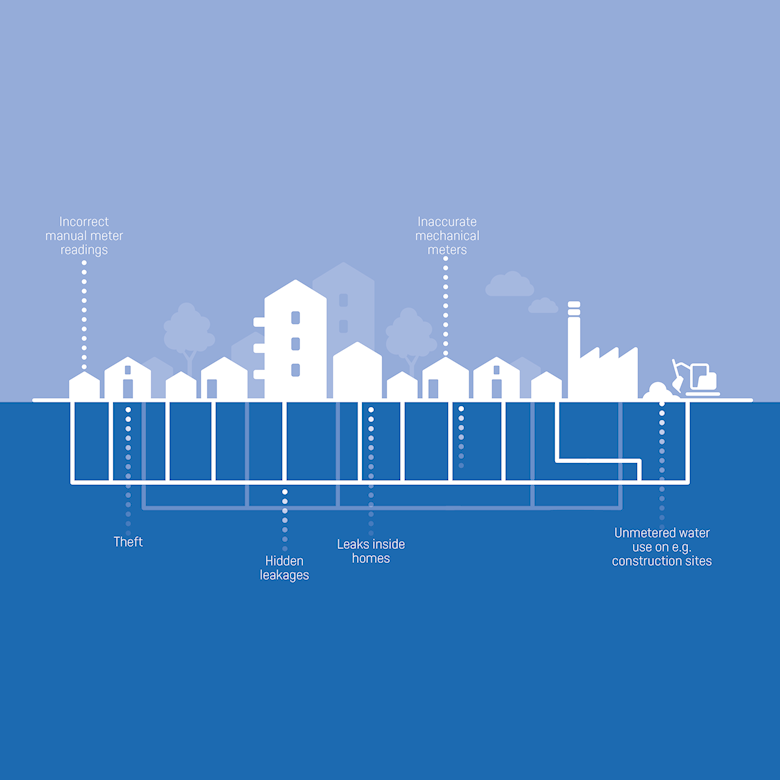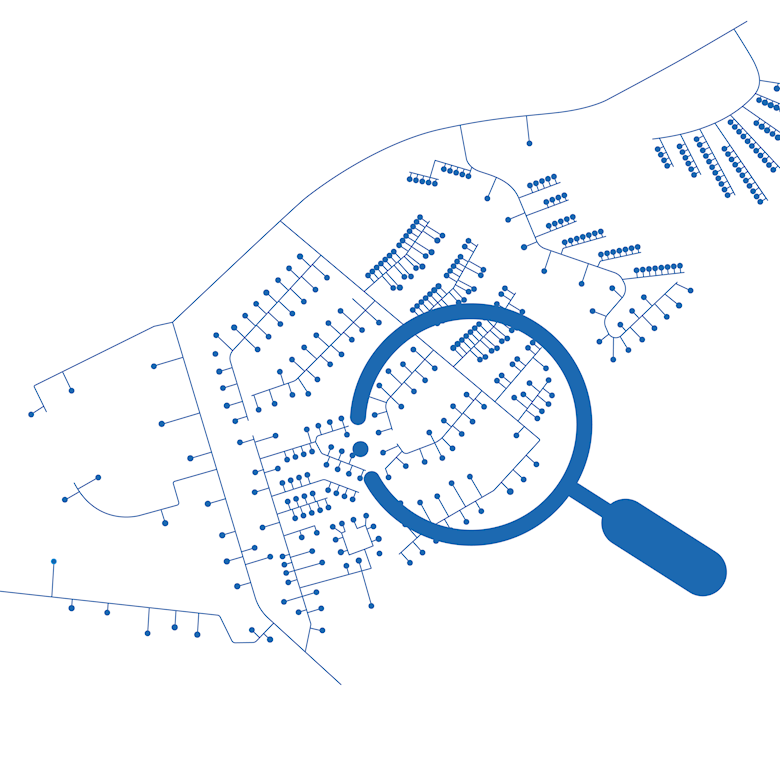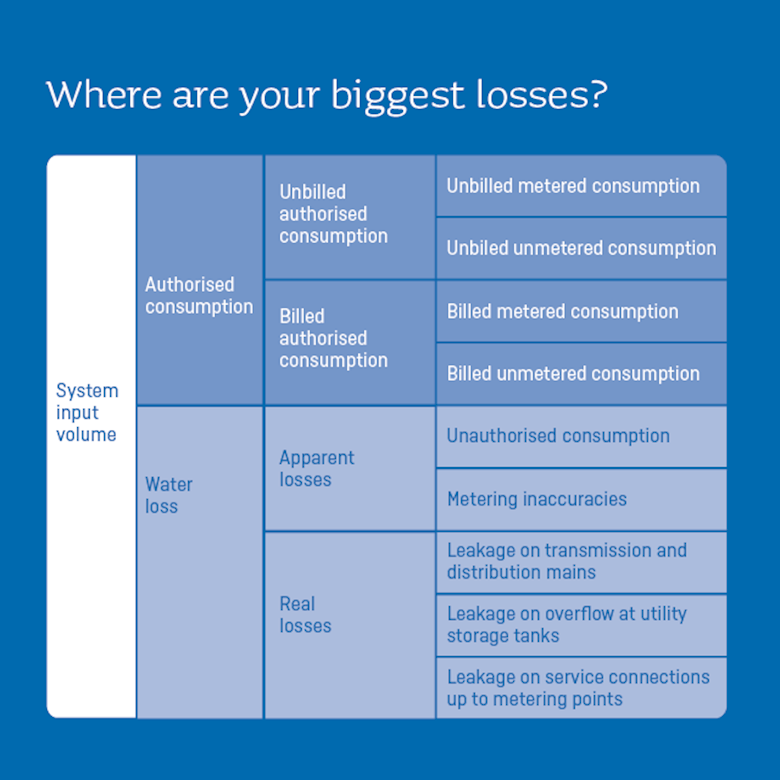Posted on Wednesday, October 30, 2019 by Sune Dupont
6 kinds of Non-Revenue Water and how to beat them with smart metering
Non-Revenue Water can be difficult to locate, but smart metering can help you to prioritise your effort.
What is Non-Revenue Water?
Non-Revenue Water is many things. And in order to reduce your NRW, you need access to the right information at the right time. Luckily, smart metering creates transparency in your network and helps you locate and neutralise different kinds of Non-Revenue Water. With it, you can learn where your biggest water losses are and get help to prioritise your efforts and focus in the future.
So let’s dive into the different kinds of Non-Revenue Water and look into how smart metering can be used to locate and neutralise them.
When you focus on water loss, there are two types you need to distinguish between.
Apparent losses and real losses. When your water loss is caused by unauthorized consumption or metering inaccuracies it can be categorised as apparent losses. Whereas we talk about real water losses when it is caused by e.g. leakages in different places.
How to beat the 6 types of Non-Revenue Water
Inaccurate mechanical meters
One of the reasons that mechanical meters are more inaccurate is because that they have a higher start flow, especially over time, which cause that more water is consumed without being measured or billed. The meter also consist of several moving parts, allowing the meters accuracy to diminish over time.
But how do you beat this type of water loss? Unmetered and unbilled consumption can be limited by installing an ultrasonic meter as it maintains its pinpoint accuracy and have no moving parts that can interfere with its lifetime.
Incorrect manual meter readings
Manual meter readings can be incorrect too so that some of the consumed and measured water remains unbilled. It is both time consuming and error-prone which results in lower data quality as data is not transferred very often. So how do you secure high quality data and meter readings?
The short answer to that is ‘get a smart meter’. To explain it further, remote reading is incorporated into the meter which allows you to access your data more frequently and eliminate misreading. This enables you to discover problems immediately and make improvements rapidly.
Theft
Theft is also an issue when it comes to Non-Revenue Water, as sometimes it is not discovered depending on when the meters were manually read the last time.
So what to do about theft? The smart meters actually transmit intelligent alarms which allow you to discover attempts of theft and other tampering irregularities more efficiently and quickly.
Unmetered water use
Unbilled unmetered consumption traditionally includes water used by the utility for operational purposes and it is very often seriously overestimated. This might be due to simplifications (a certain % of total system input) or overestimates on purpose to ‘reduce’ water losses. Components of unbilled unmetered consumption have to be identified and individually estimated.
And to do that, there are several things that need to be considered. For examples the water used for flushing the distribution mains. How many times per month is this done, how much water has been used and for how long? Another example is fire fighting. Depending on the size of the fire, the water usage and thereby unbilled unmetered consumption changes.
Hidden leakages
Leakages is a huge part of water losses today as they are difficult to discover as they do not always appear to the surface. The most common types of leakages is found on transmission and distributions mains. About one third of leakages happens here.
So how can you discover what is hidden? You can optimize the leak detection process by letting the meters work for you. The smart meter provides data 24/7 and can help you narrow down a suspected area to where the leaks actually are through automatic daily water balances that lets you know if the water loss in one areas increases.
Leakages inside consumers home
Even though it is not calculated as Non-Revenue Water leaks inside a home after the meter installation should still be considered as water loss which must be considered as well due to the environmental regulations, but also in regards to consumers.
The smart meter automatically sends out an alarm in case of a leak or burst inside a home. This can help you limit your water loss and at the same time increase your customer service. Some of the leaks might be so small that worn out mechanical meters never detects that something is wrong. The smart meter counts every drop throughout the lifetime of the meter.
Leakages on Service Connections
Did you know that one third of all leakages happen on service connections? This means that the pipes leading from the distribution mains and into the house are often affected by leakages. These leakages are hard to discover as they are placed on private property. So how do we protect your water and proactively fight water loss? The new smart water meter, the flowIQ® 2200, has in-built acoustic leakage detection.
In connection with the analytics platform, Leak Detector, it provides increased transparency in your distribution network. This enable you to identify and verify leaks more efficiently as they can be located on service connections before developing into bursts. Thereby, it becomes much easier to fight water loss in the future.
Are you still curious and want to learn more about how to beat leakages and water loss?
Then read more about the new solution Acoustic Leakage Detection and let it help you to become smarter.
Let’s go out and beat the leaks in your distribution network.




